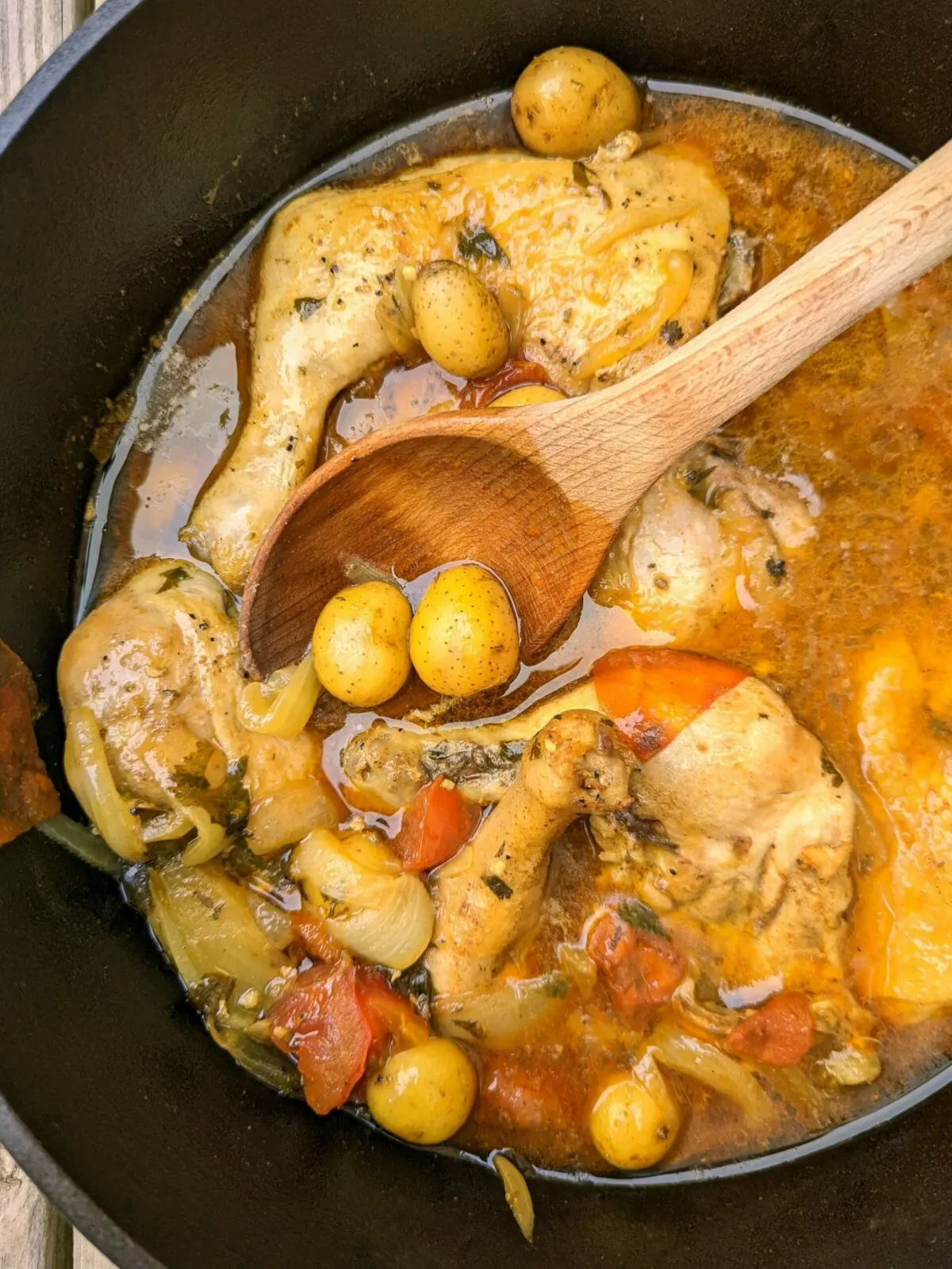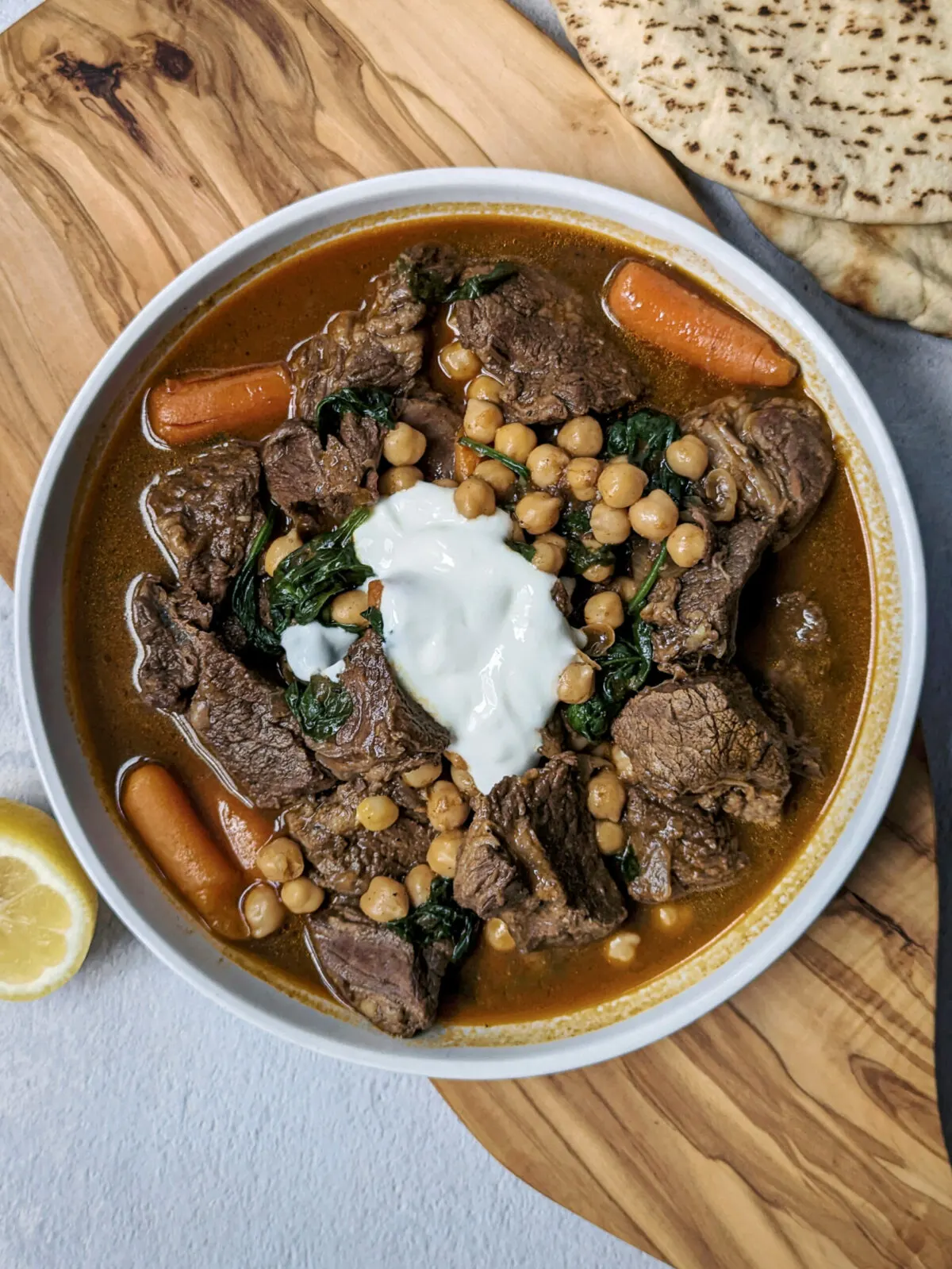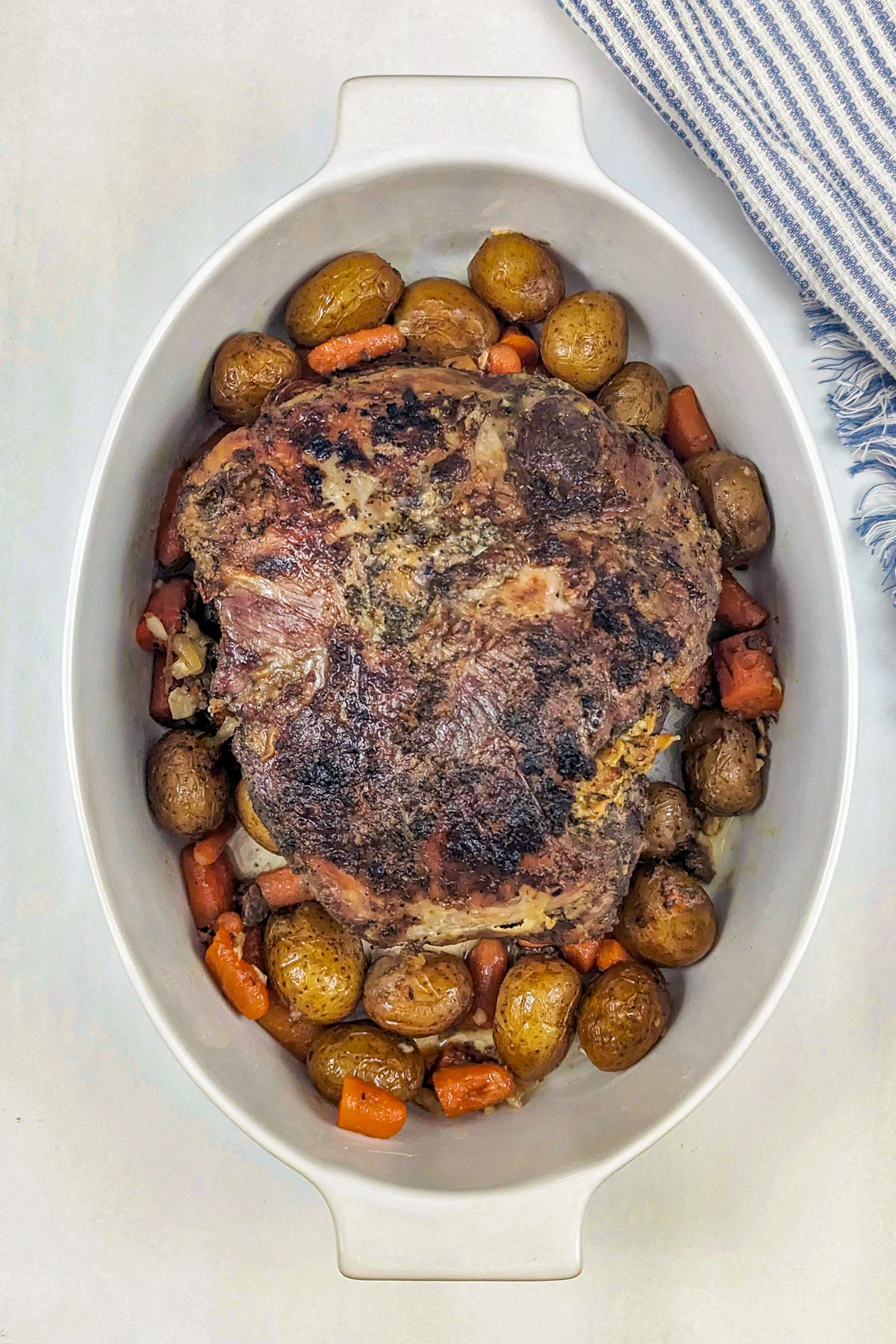What is Pao De Sal?
Pão Francês (French bread) is a type of Brazilian French bread popular in Brazil, where you can find the freshly baked rolls in homes and local bakeries. But the bread also goes by other names like “pãozinho” (roll) or “pão de sal” (salt bread), depending on which region you’re from in Brazil.
What You Need to Make This Recipe
- Flour: I prefer using all-purpose flour to make pao de sal; King Arthur’s is my favorite. If you don’t have any available, use bread flour.
- Dry Active Yeast: Use one tablespoon of dry active yeast or one packet of yeast.
- Sugar: Sweeten the bread with white sugar or honey. If you use honey, stir it into the mixture with cold water and oil instead of the dry ingredients like the white sugar.
- Salt: Finish the salt bread roll recipe with a bit of salt.
- Water: Stir COLD water into the dry ingredients to form the right consistency for the dough.
- Oil: Increase the moisture and make kneading easier with oil.
Additions and Substitutions
Replace the dry active yeast with ¼ cup of sourdough starter to make the rolls rise.
How to Make Pao de Sal
The full recipe with measurements is in the recipe card below.
Combine the Ingredients:
Step 1: Combine flour, dry yeast, sugar, and salt in a large mixing bowl.
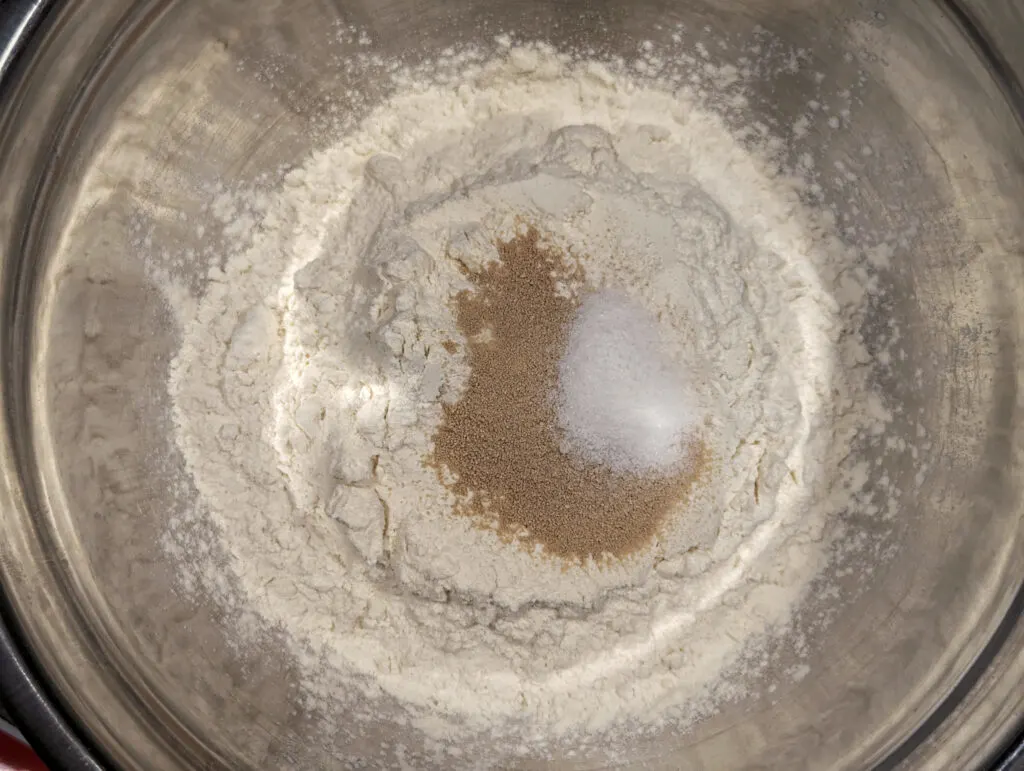
Step 2: Then, make a well in the center of the mixture and pour cold water and olive oil into it; mix using a dough whisk until a dough forms.
Knead the Dough:
Step 3: Turn the dough onto a lightly floured surface and knead it for about 5-10 minutes until it is smooth and elastic (see our expert tips section for video instructions on kneading dough).
Watch this video demonstrating the technique.

First Rise:
Step 4: Place the dough in a lightly oiled bowl, cover it with a damp cloth or plastic wrap, and let it rise (in a warm place) for 1 hour until it doubles in size.
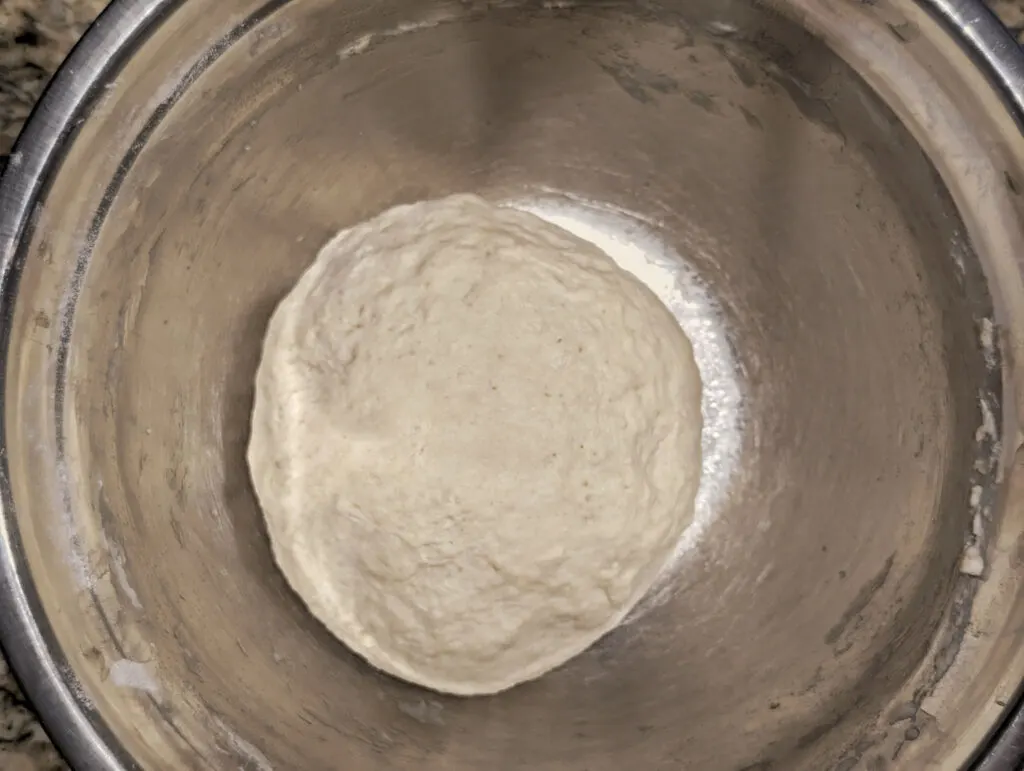
Shape the Rolls:
Step 5: Once the dough has risen, punch it down to release the air. Divide the dough into about eight equal pieces.

Step 6: Use a rolling pin to roll out one of the sections into a rectangular shape.
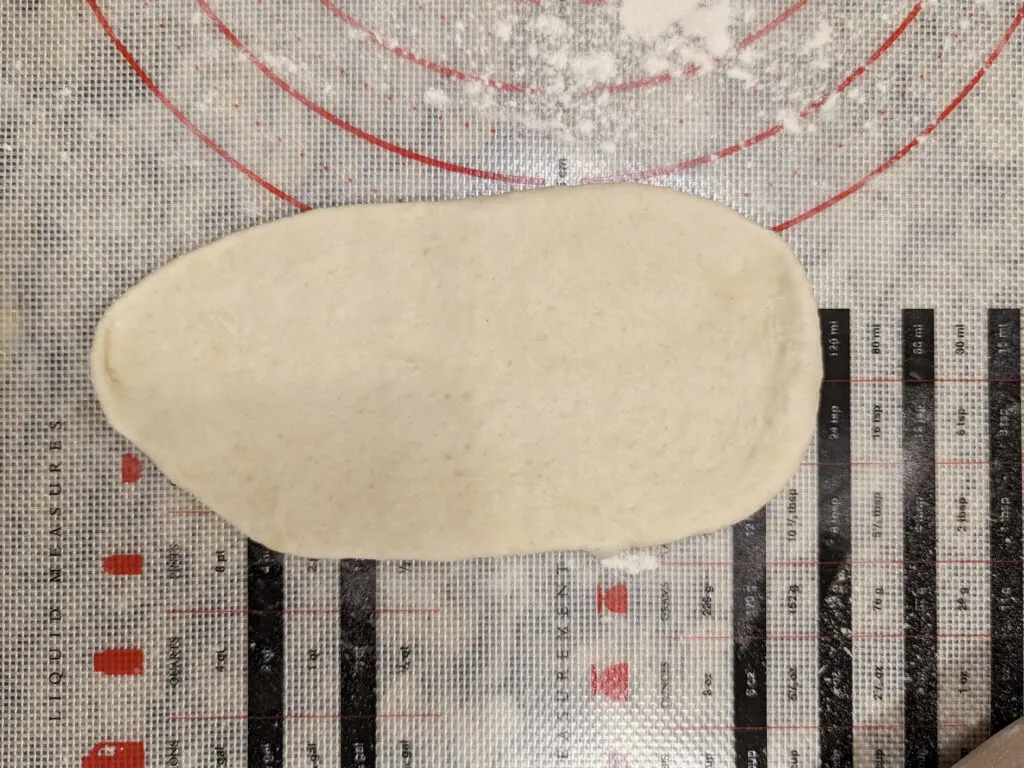
Step 7: Then, fold it into thirds.
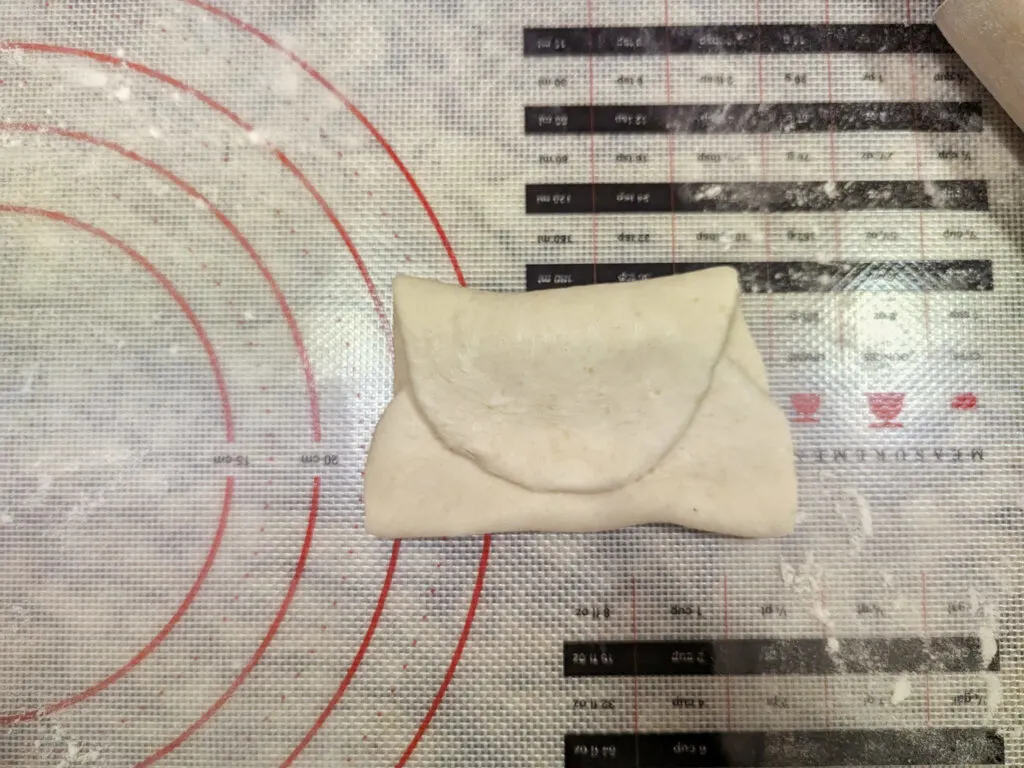
Step 8: Turn the folded rectangle vertically and roll it out until is ¼-inch thick.
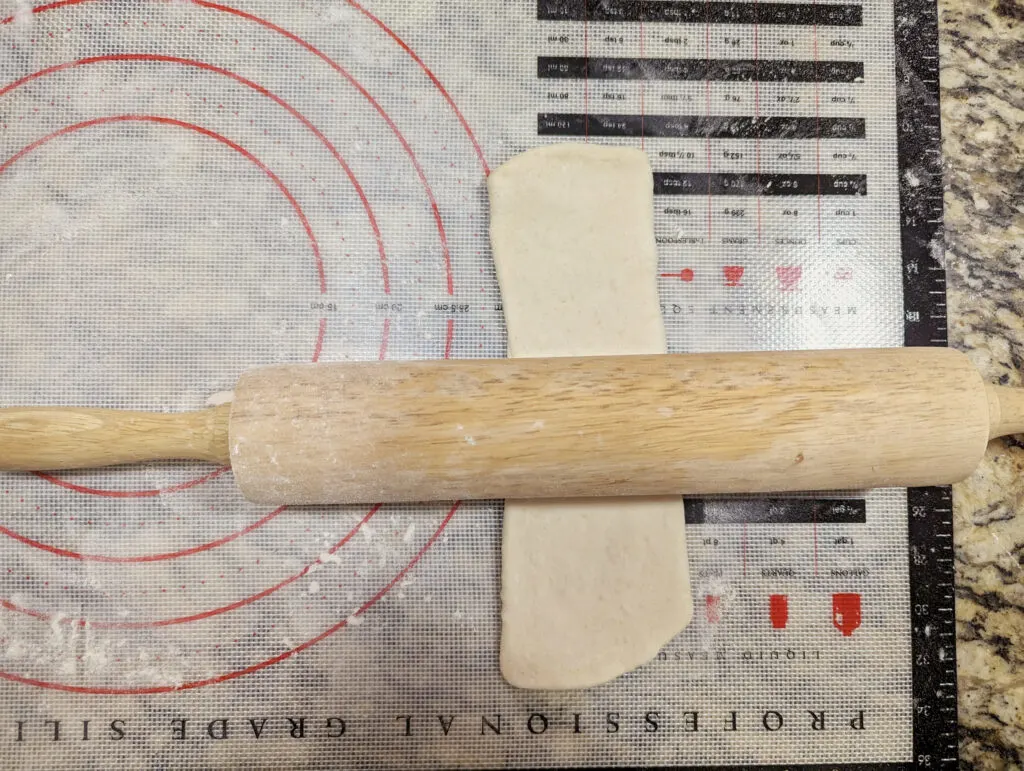
Step 9: Start from the bottom and roll the rectangle into a cylinder (almost like a croissant).

Step 10: Then, use a sharp knife or bread-scoring tool to score the tops of each roll and place them onto a baking sheet lined with parchment paper. Repeat this process with the remaining dough balls.
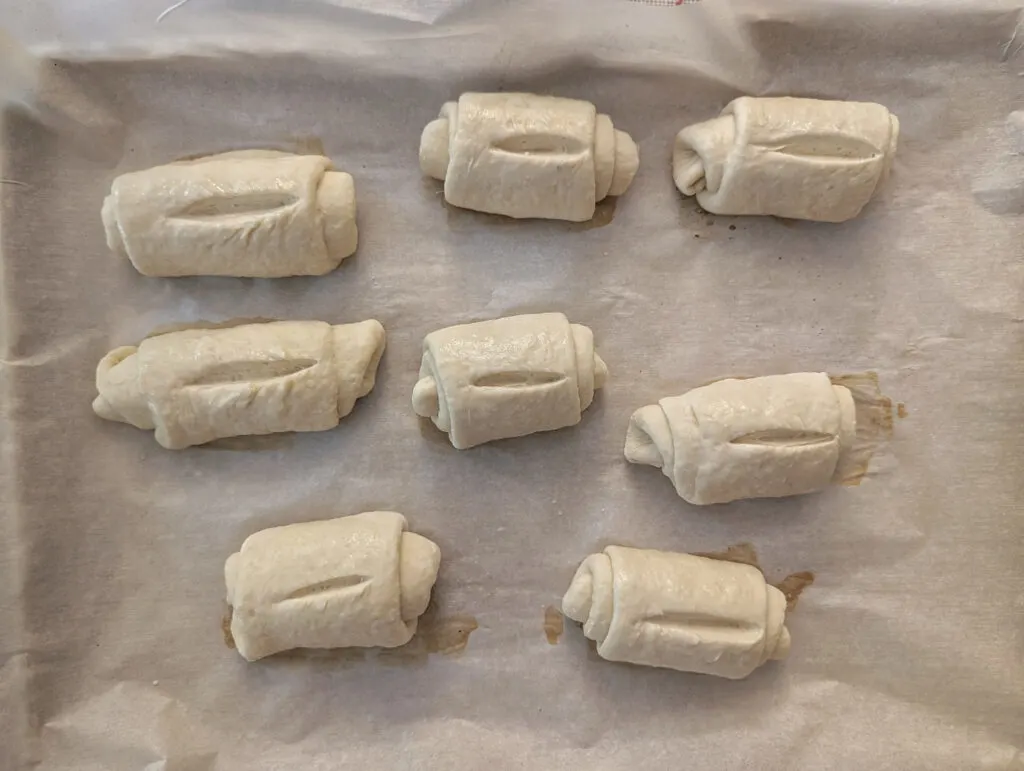
Second Rise:
Step 11: Cover the baking sheet with the rolls with a damp cloth or plastic wrap and let them rise for another 30 minutes.

Bake:
Step 12: Preheat your oven to 400°F (204°C). Brush the rolls with water, as is tradition, and bake for 15-20 minutes. The rolls should be golden brown.
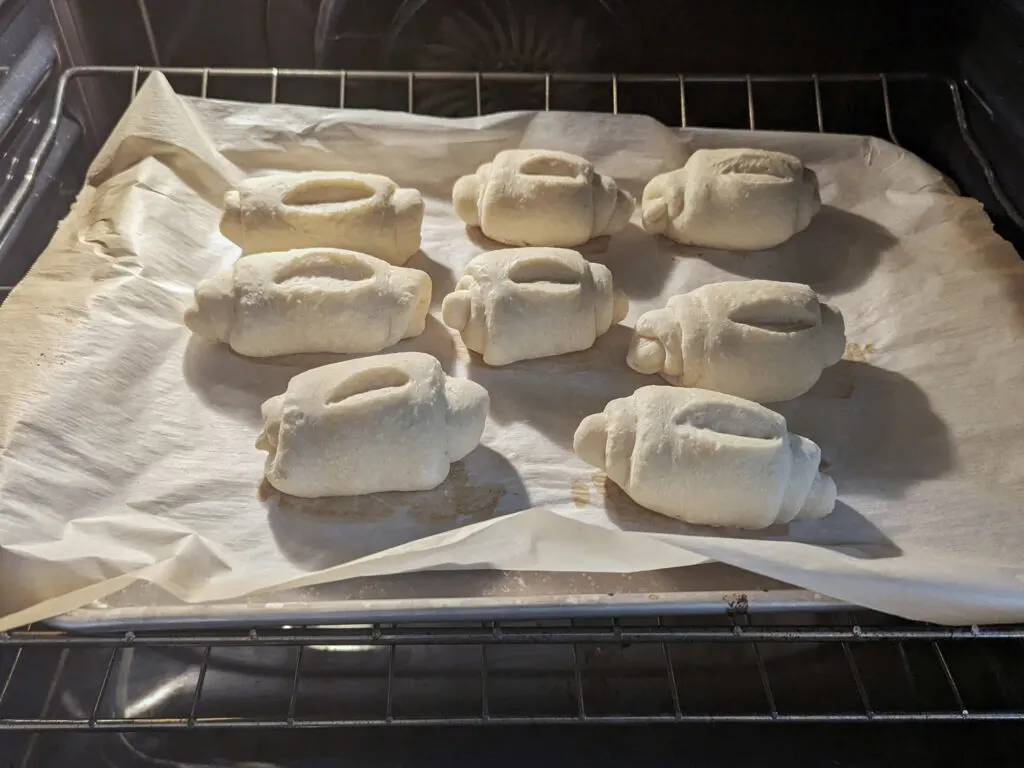
Step 13: Remove the rolls from the oven and let them cool on a wire rack before serving.

Expert Tips
- According to Cook’s Illustrated, it’s important to use COLD water when making dough because colder water maintains the gluten’s structure so it can contain the gas released by the yeast and deeply flavor the rolls.
- When kneading the dough, fold over one end of the dough and press. Turn it slightly and repeat. Enjoy this video from King Arthur’s Baking Company that demonstrates the technique.
- Scoring the bread with a sharp knife or bread-scoring tool guides the rise of the rolls and provides a way for the steam to escape, leaving you with perfectly soft rolls to enjoy.
Searching for More Like This?
If you love this recipe, pair the rolls with one of these dinner favorites!
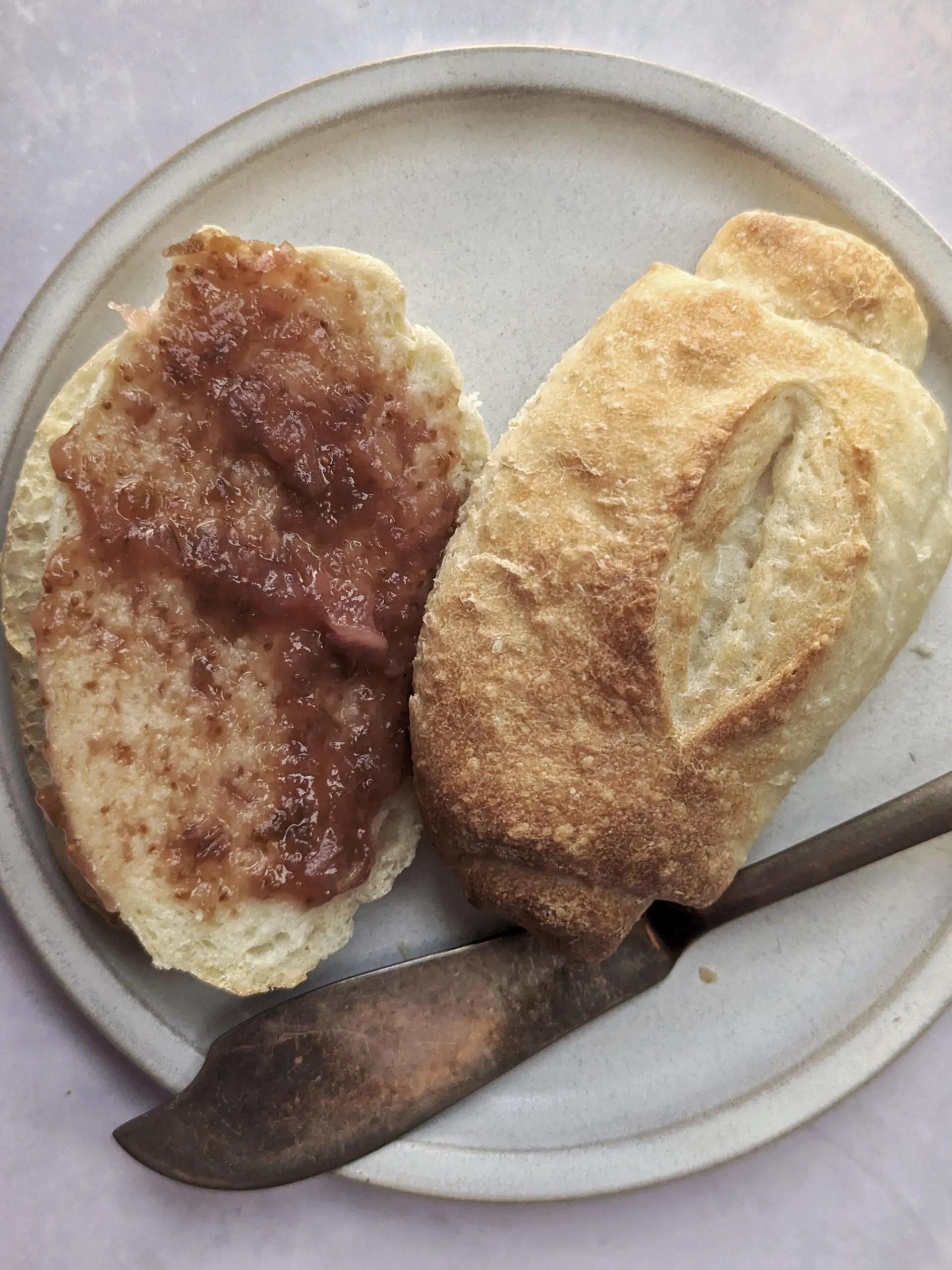
What to Serve with Pao de Sal?
In Brazil, pão francês or pao de sal is often eaten as a quick, grab-and-go breakfast – with butter, cream cheese (requeijão), or jam. Or you can use the bread to make sandwiches, like our air fryer French dips or a Bella Hadid sandwich. The soft, slightly sweet bread complements savory dinners, too. Try our IKEA Swedish meatballs recipe, Instant Pot hard boiled eggs, or savory Instant Pot Ropa Vieja.
What to do With the Leftovers
- Storage – Store leftover rolls in an airtight silicone or plastic bag at room temperature for up to 5 days.
- Freeze – Let the bread cool and wrap it in plastic to avoid freezer burn. Then, transfer the bread to a freezer-safe container or bag. Pao de sal freezes for three months.
- Thaw – Before serving, defrost it in the refrigerator overnight. Or you can take it out of the freezer and put it in the microwave for 30 seconds, and it will look freshly made.
- Repurpose – Use the leftover bread to make grilled bread (pão na chapa), French toast (rabanada), or bread flan (pudim de pão).
More Bread Recipes:

Pao de Sal
- Dough Whisk or Stand-Mixer with a Bread Hook
- 500 grams all-purpose flour
- 1 tablespoon active dry yeast
- 2 teaspoons white sugar
- 2 teaspoons salt
- 1⅓ cups cold water
- 1 tablespoon olive oil
- Combine flour, dry yeast, sugar, and salt in a large mixing bowl. Then, make a well in the center of the mixture and pour cold water and olive oil into it; mix using a dough whisk until a dough forms.
- Turn the dough onto a lightly floured surface and knead it for about 5-10 minutes until it is smooth and elastic (see our expert tips section for video instructions on kneading dough).
- Place the dough in a lightly oiled bowl, cover it with a damp cloth or plastic wrap, and let it rise (in a warm place) for 1 hour until it doubles in size.
- Once the dough has risen, punch it down to release the air. Divide the dough into about eight equal pieces.
- Use a rolling pin to roll out one of the sections into a rectangular shape. Then, fold it into thirds.
- Turn the folded rectangle vertically and roll it out until is ¼-inch thick.
- Start from the bottom and roll the rectangle into a cylinder (almost like a croissant). Then, use a sharp knife or bread-scoring tool to score the tops of each roll and place them onto a baking sheet lined with parchment paper. Repeat this process with the remaining dough balls.
- Cover the baking sheet with the rolls with a damp cloth or plastic wrap and let them rise for another 30 minutes.
- Preheat your oven to 400°F (204°C). Brush the rolls with water, as is tradition, and bake for 15-20 minutes. The rolls should be golden brown.
- Remove the rolls from the oven and let them cool on a wire rack before serving.
- According to Cook’s Illustrated, it’s important to use COLD water when making dough because colder water maintains the gluten’s structure so it can contain the gas released by the yeast and deeply flavor the rolls.
- When kneading the dough, fold over one end of the dough and press. Turn it slightly and repeat. Enjoy this video from King Arthur’s Baking Company that demonstrates the technique.
- Scoring the bread with a sharp knife or bread-scoring tool guides the rise of the rolls and provides a way for the steam to escape, leaving you with perfectly soft rolls to enjoy.
- The nutritional information shown is an estimate provided by an online nutrition calculator. It should not be considered a substitute for professional advice.


